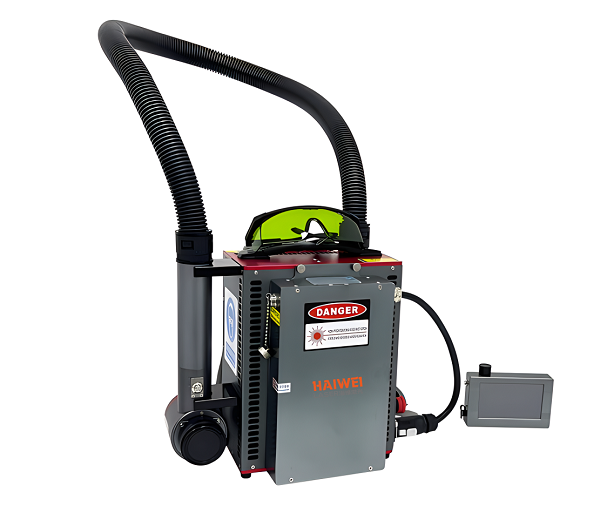Backpack Laser Cleaning Machine: Enabling Flexible and Clean Manufacturing
A backpack laser cleaning machine offers a practical solution for maintenance, restoration, and surface prep tasks where fixed or robotic systems aren’t feasible. Unlike traditional methods like sandblasting or chemical stripping, it delivers precise, dry cleaning without media residue—ideal for on-site or hard-to-reach applications.

Where It Makes Sense
This portable format shines in scenarios such as:
Mold cleaning in automotive or plastic injection plants, where downtime must be minimized;
Rust removal on pipelines, ship hulls, or structural steel in field maintenance;
Pre-weld cleaning of joints in fabrication shops, especially on aluminum or galvanized steel;
Heritage conservation, where delicate control prevents damage to underlying surfaces.
The operator wears the laser source and battery pack (typically 20–200W fiber laser), while guiding a handheld scan head connected via flexible fiber. Total system weight usually ranges from 5 to 10 kg, designed for mobility without sacrificing performance.
Key Considerations Before Buying
Not all contaminants respond equally. The backpack laser cleaning machine works best on oxides, light paint, oil films, and carbon deposits. Thick coatings or greasy sludge may require pre-wipe. Also critical:
Integrated fume extraction (often via a small vacuum unit worn on the belt);
Compliance with laser safety standards (IEC 60825 Class 4, requiring protective eyewear and controlled zones);
Battery runtime—most offer 5–10hours under continuous use.
Real Value Proposition
The main advantage isn’t raw power—it’s flexibility. Teams can clean complex geometries without disassembly, reduce chemical handling risks, and avoid abrasive waste disposal. For job shops or maintenance crews needing a mobile, eco-friendly cleaning tool, a backpack laser cleaning machine fills a unique niche between benchtop units and large automated systems.
Choose based on your typical contaminant type, access constraints, and required daily runtime—not just wattage.
Recent Posts
- What are the advantages of laser welding machines in lithium battery pack production lines?
- What issues should be noted when choosing a lithium battery pack production line?
- Quality Inspection and Control of Lithium Battery Module Pack Production Line
- Cell grouping and sorting process in lithium battery module pack production line
- What are the safety hazards of lithium battery pack production lines and how can they be prevented?
INQUIRY

